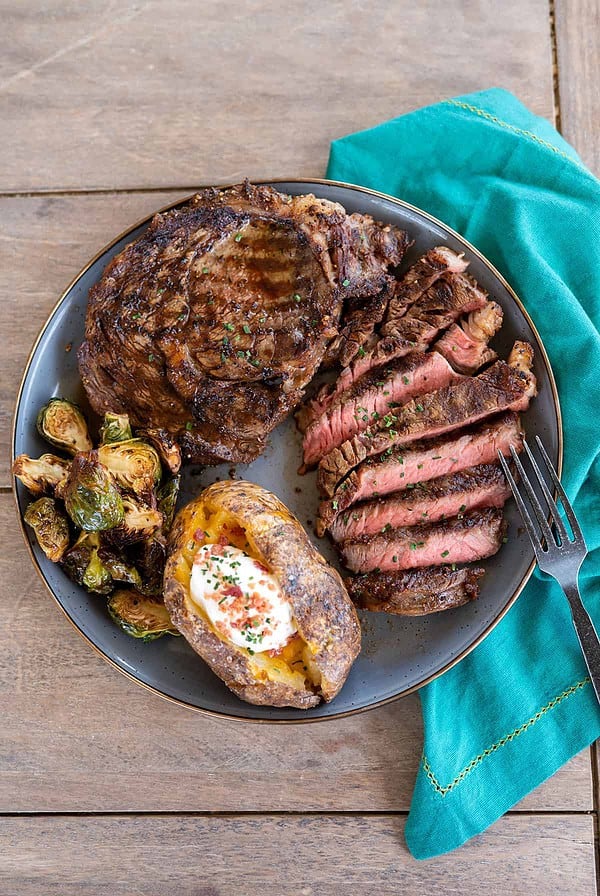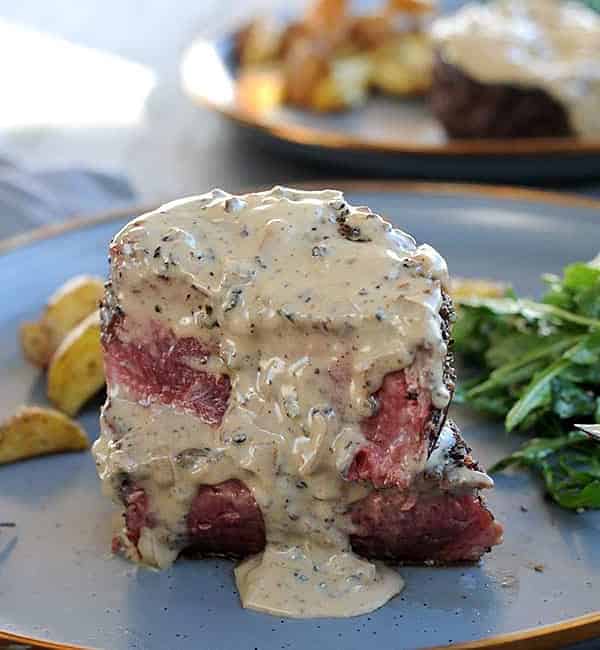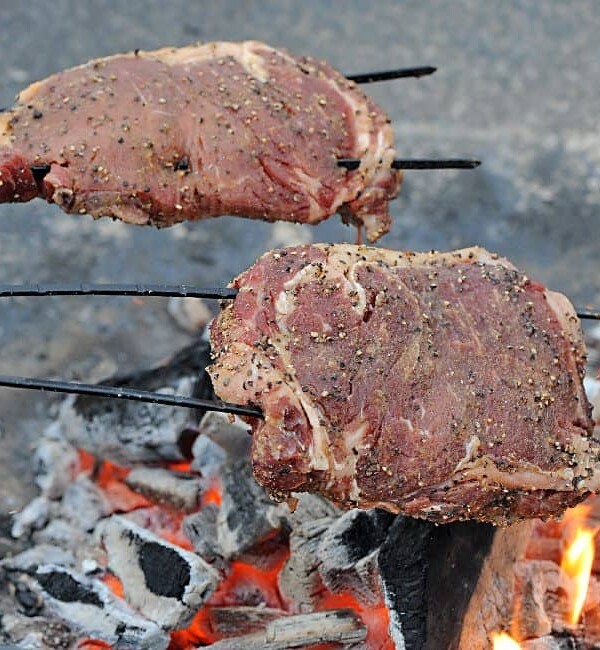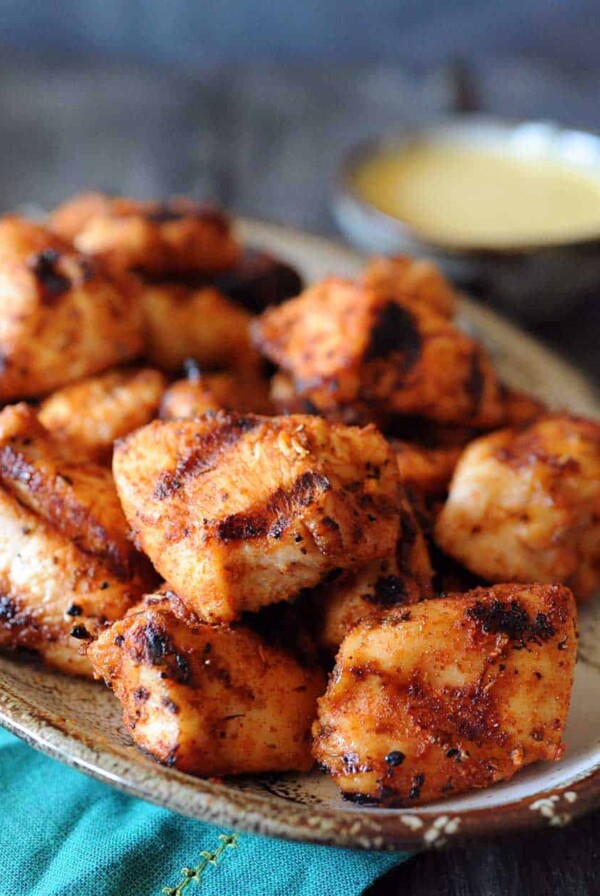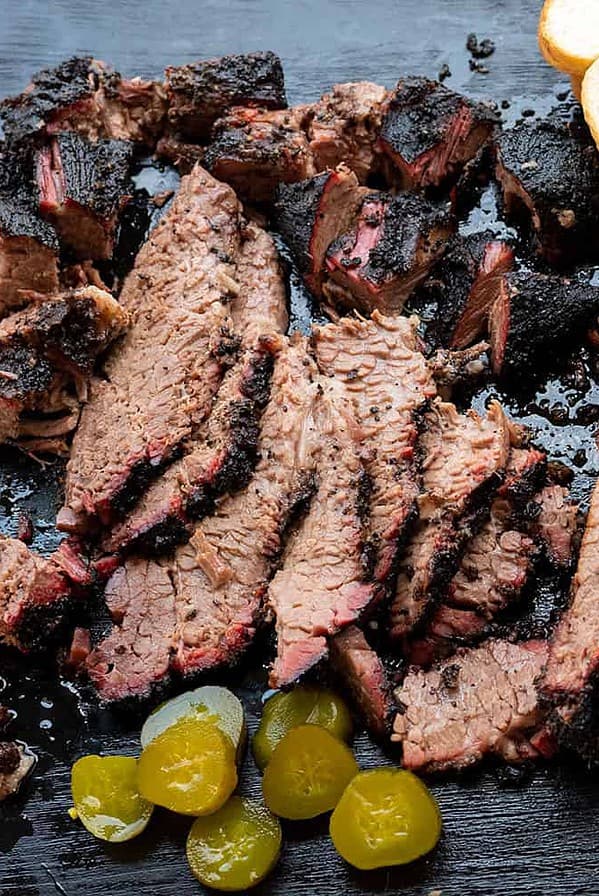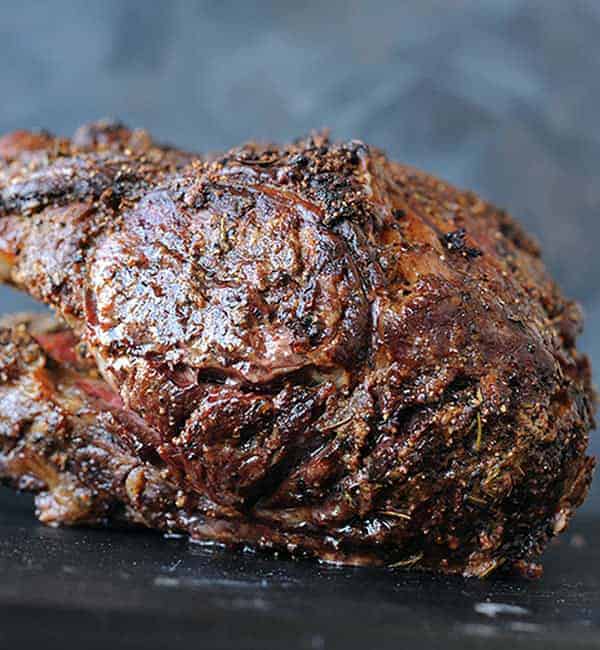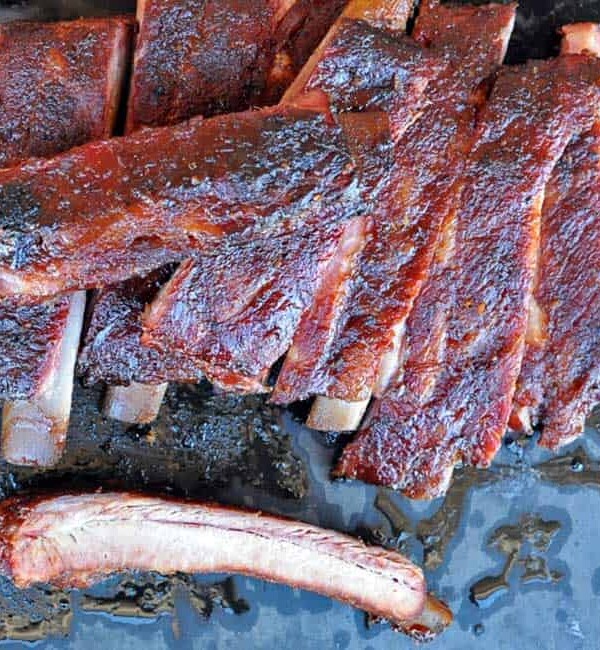Have you ever wondered how to achieve that perfect juicy, tender and flavorful steak? It all comes down to the science of doneness.
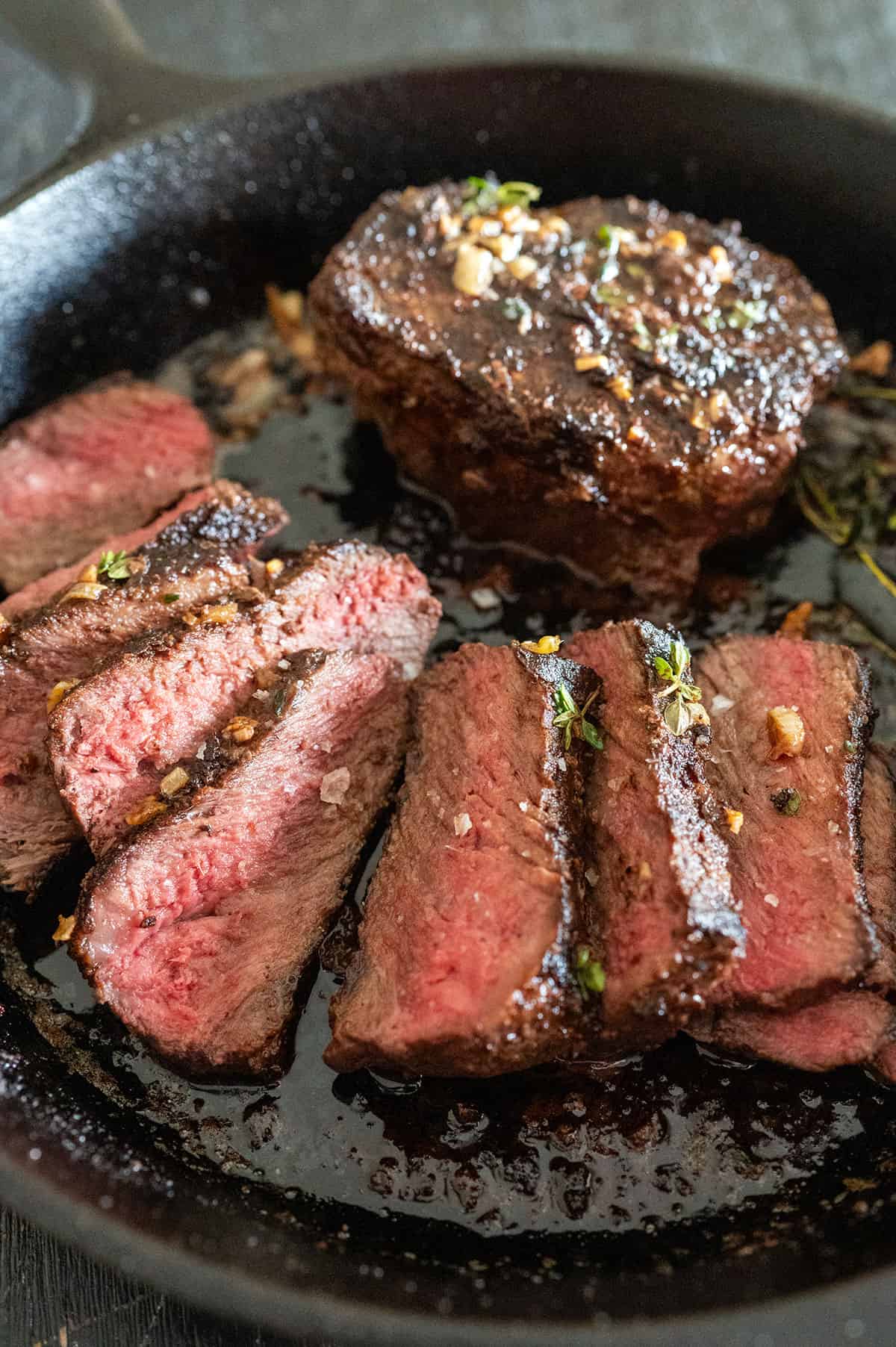
Save this BBQ Tip
Enter your email, and I’ll send this link directly to your inbox. Plus, you’ll get new BBQ recipes and tips weekly.
In this sizzling steak temperature guide, learn the difference between rare, medium-rare, medium, medium-well and well-done to discover the secrets to cooking your perfect steak to your desired degree of doneness.
Table of Contents
How doneness affects steak
As steak cooks, heat causes the proteins in the meat to undergo structural changes. This affects the color, texture and juiciness of the steak.
The Maillard effect or Maillard reaction is the browning that happens when steaks are introduced to heat. The steak’s amino acids react with the food’s natural sugars, and the chemical reaction creates a rich golden-brown color with a nutty, caramelized taste.
At the same time, the heat is altering the protein structure through a process called denaturation. In rare steaks, it’s only minimally altered compared to well-done steaks.
Additionally, heat renders internal fats, which contributes to the flavor and tenderness of the meat.
Because heat is what causes these scientific changes, chefs use temperature as a guide to cook the perfect steak.
USDA safety considerations
Before breaking down different steak doneness levels, it’s important to consider the USDA recommended temperature for cooked steak.
They advise cooking raw beef, including steak, to an internal target temperature of 145 F with a 3-minute resting period. This is considered the safe minimal internal temperature to prevent foodborne illness.
They also recommend using a digital thermometer to get the most accurate temperature reading.
Restaurants around the U.S. offer steaks cooked below 145 F. To do so, the FDA requires them to include a consumer advisory statement on their menus about the risks of eating raw or undercooked items.
Diners who are very young, elderly, pregnant or have compromised immune systems are most at risk.
So why do restaurants offer steaks cooked below what the USDA recommends?
Because steaks cooked to medium-rare or rare have a more enjoyable mouthfeel, taste and texture for many diners. Plus, the restaurants are confident in the safety protocols followed during the sourcing of their meat.
If you plan to cook your steak at home below the USDA recommended temperature of 145 F, be sure to choose beef from a quality meat source.
If you’re concerned about going below that temperature or you fall into the high-risk category, you can also obtain great tenderness, juiciness and flavor by cooking beef that’s graded USDA prime.
Certain cattle breeds like Angus and Wagyu are also known for more marbling and better tenderness.
Steak Doneness Levels
The perfect doneness level is a personal preference. Some people consider a medium-rare steak to be a perfectly cooked steak. Others feel more comfortable eating steak that has no red or pink.
The best way for you to find your ideal temperature and level of doneness is to try steaks cooked to different internal temps.
Some experienced chefs can tell a steak’s doneness by feeling it. If you press on the steak, the proteins will be looser the rarer it is. As it cooks, the steak will become firm.
The most accurate way to measure the internal temperature of a steak is to use an instant-read thermometer.
While the steak is cooking, insert the meat thermometer through the side into the center of your steak. Make sure the tip of the thermometer is surrounded by meat. If it touches bone, gristle or fat, the temperature can be skewed.
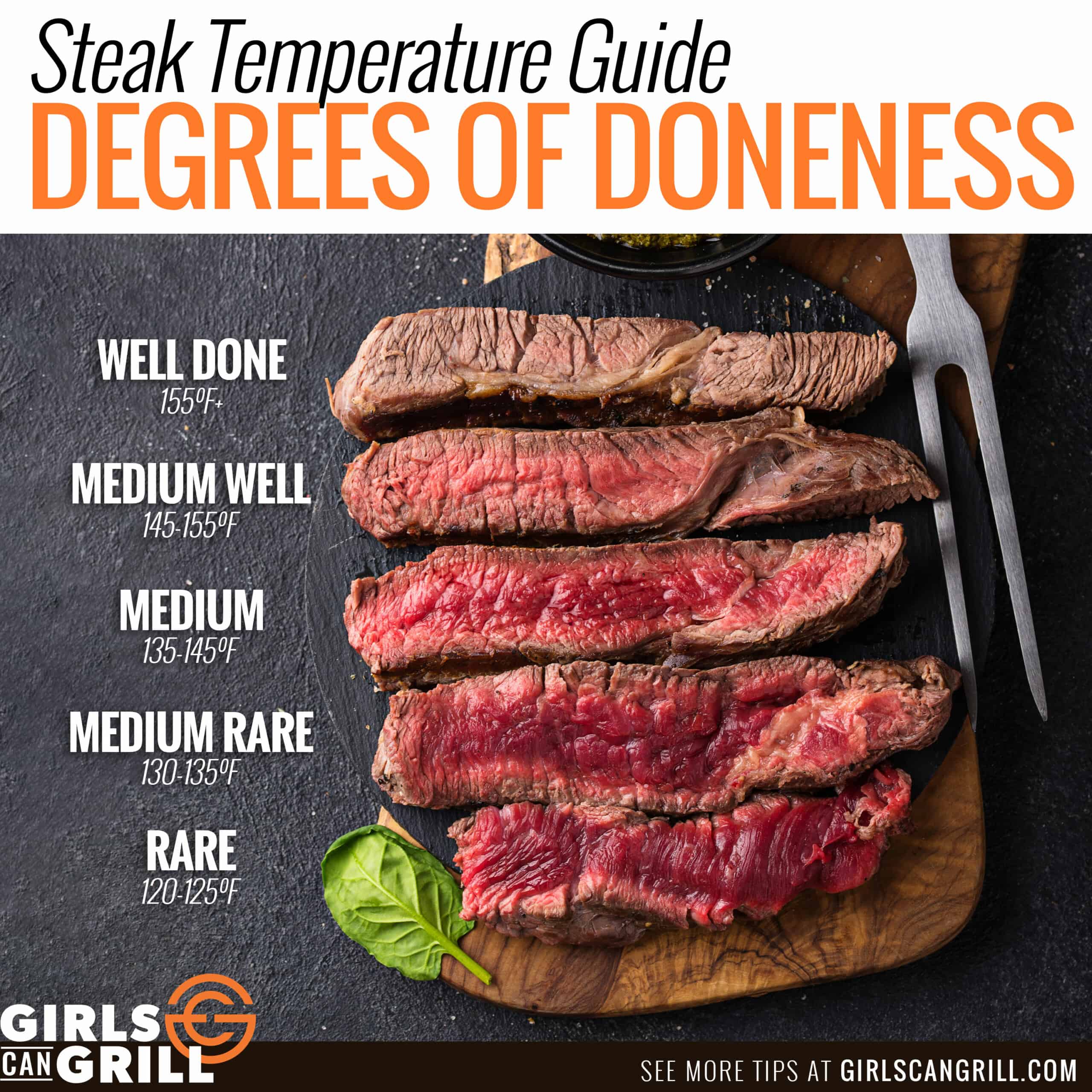
Blue steak
- Temperature: 115-120 F
- Color: Bluish-red raw inside with quick thin sear outside
- Tenderness: Can be chewy depending on the cut
Rare steak
- Temperature: 120-125 F
- Color: Bright red center with slight char on outside
- Tenderness: Very soft
Medium-rare steak
- Temperature: 130-135 F
- Color: Warm red center with more browning on edges
- Tenderness: Evenly soft and tender
Medium steak
- Temperature: 135-145 F
- Color: Light pink center with thicker ring of brown
- Tenderness: Soft in the center with firm edges
Medium-well steak
- Temperature: 145-155 F
- Color: Light brown with a touch of pink in center
- Tenderness: Stiff
Well-done steak
- Temperature: 155 F plus
- Color: Brown all the way through
- Tenderness: Firm and chewy
Resting and carryover cooking
Once the meat is removed from the heat, the steak will continue to cook. This is called carryover cooking.
The residual heat from the outer layer of the steak will migrate toward the center. During this time, the internal temperature can increase by 5 degrees or more.
To compensate for carryover cooking, remove your steak from the heat when it is a few degrees below your desired temperature.
Is the red color in medium-rare beef blood?
No. The red color comes from a pigment called myoglobin, which is a protein found in muscle tissue that helps deliver oxygen to the muscles.
Raw beef appears red because the myoglobin is in its natural state. When heat is introduced to the meat, the myoglobin undergoes a chemical change.
At lower temperatures, such as medium-rare, the myoglobin retains some of its red color, resulting in a pinkish-red hue. As the cooking temperature increases, myoglobin gradually changes to a tan or brown color.
When beef is cooked to well-done or beyond, the myoglobin is fully denatured, resulting in a grayish-brown color. This is why well-done beef is noticeably less red or pink compared to medium-rare beef.
Top tips to get the best results
The cooking process and cut of steak also play a role in reaching your desired steak doneness level.
For thicker steak cuts, like cowboy, tomahawk and filet mignon, consider the reverse sear cooking method where you slowly bring the steak up to temp over indirect low heat and quick sear it at the end over high heat.
Thinner steaks like skirt steak, flank steak or flat iron steak have much shorter cooking times, making it challenging to hit your desired doneness. These cuts are often marinated to make up for that and to help tenderize them.
Also keep in mind that if you season your steak and leave it at room temperature for a short period of time, it will already start to warm slightly before being exposed to the heat of the grill. This will impact your cook time somewhat.
The next time you’re cooking steak, consider these tips and cook to your desired temperature.
If you source great quality beef and don’t fall into a high-risk category, try cooking it to medium-rare for a flavorful steak that is guaranteed to be juicy and tender.

